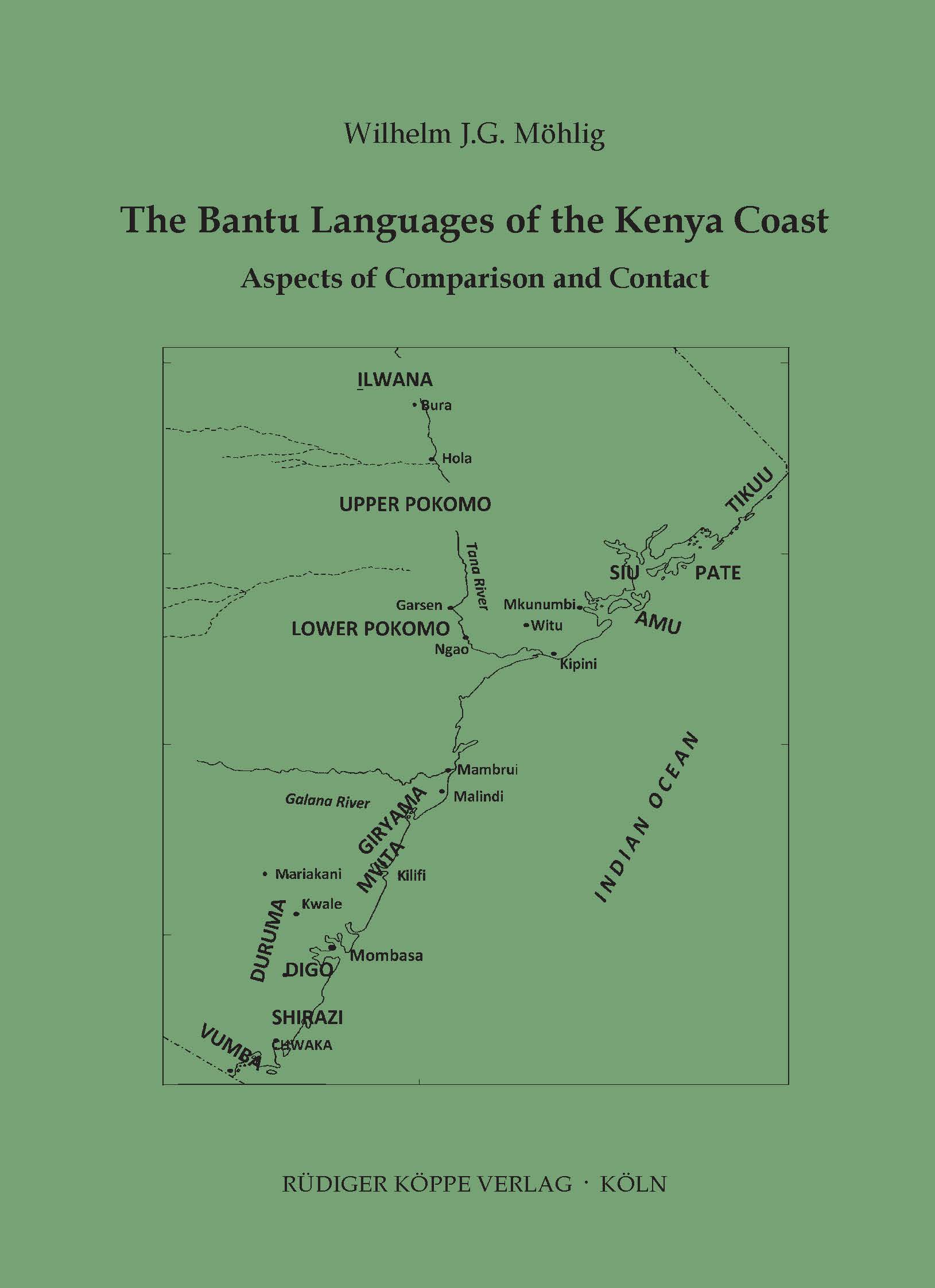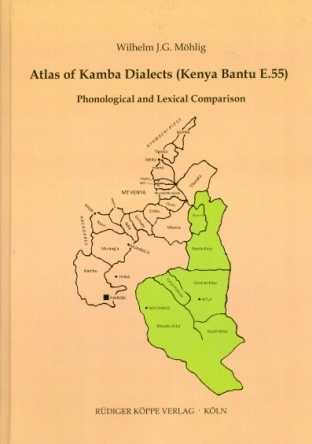



This study focuses on lexical, phonetic and grammatical data collected mainly on the Kenyan coast between 1970 and 1990. The reason why the linguistic data have not been presented earlier is the lack of dialectometric computer programmes capable of processing such a mass of entries. The basic corpus consists of about 50,000 lexical entries in the form of tape recordings and written transcriptions based on a standardised word list of 600 items. These are grouped into 26 semantic categories, ranging from parts of the body, concepts of hygiene and movement to notions of quality such as big, bad, new, etc.
The languages under research are in detail (according to Guthrie): Ilwana (E.701), Pokomo (E.71), Malalulu (Upper Pokomo), Malanchini (Lower Pokomo), Mijikenda (Northern Mijikenda (E.72): Giryama (E.72a), Kauma (E.72b), Chonyi (E.73c), Jibana (E.73F), Kambe (E.72G), Ribe (E.72H), Southern Mijikenda (E73-732): Digo (E.73), Duruma Rabai) and the Northern, Central and Southern Swahili dialects. The following outline emerges:
SABAKI LANGUAGES
Ilwana (E.701)
Pokomo (E.71)
- Upper Pokomo
Milalulu / Ndura-Ndera / Zubaki
- Lower Pokomo
Buu-Kalindi / Dzunza / Kulesa / Mwina / Ngatana
Mijikenda (E.72-73)
- North Mijikenda (E.72)
Giryama (E.72a) / Kauma (E.72b) / Chonyi (E.73c) / Rabai (E.73e) / Jibana (E.73F) / Kambe (E.72G) / Ribe (E.72H)
- South Mijikenda (E.73-732)
Digo (E.73)
Kenyan Swahili
- Northern Kenyan Swahili dialects
Amu / Miini / / Pate / Siu / Tikuu
- Central Kenyan Swahili dialects
Jomvu / Mvita
- Southern Kenyan Swahili dialects
Chwaka / Shirazi / Vumba-Vanga
The 600-word list provides sufficient lexical and phonological data to serve all dialectological questions like the definition of dialect centres, dialect boundaries, distances between the local languages and even dialect strata at different historical levels of abstraction. In addition to this material, the basic grammatical features (nominal classes, pronouns, verbal structure) were recorded.
In the Coastal Bantu languages of Kenya, migration and neighbourly contact are the main impulses of linguistic development. The kind of language contact in terms of commercial interests, the social level of the speakers as well as the intensity and duration of contact turn out to be the most decisive parameters of mutual or unilateral influence and finally of individual language formation.
The basic data are here present in three descriptive chapters on phonology (chapter 2), lexicon (chapter 3) and grammar (chapter 4) followed by three analytical chapters according to the different analytical processes of dialectometry (chapter 5), comparative Bantu in a perspective from below (chapter 6) and contact linguistics (chapter 7).
The dialects of Kamba (E.55) have been analyzed in an earlier volume of the same series; you will find descriptions of further Bantu languages in the following monographs and paper collections:
© 2026 by Rüdiger Köppe Verlag – www.koeppe.de